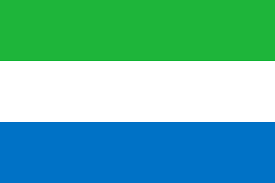What is ‘kush’ and why has it surfaced in Sierra Leone?
- Ben Carson

- May 27, 2022
- 3 min read
IN SIERRA LEONE, the West African country considered among the major gateways for cocaine trafficking on the continent, the proliferation of substances engineered to be abused is not new. Now, though, the rise of the drug ‘kush’ is threatening to destabilise its already economically fragile communities, fuelling a wave of addiction, hospitalizations and death – with an ever-younger user-base being exposed to it.
Not to be confused with the indigenous strain of cannabis found in the Hindu Kush mountains, or the former Kingdom of Sudan, the kush which is spreading through the streets of Freetown is a synthetic cannabinoid copy-cat usually made from dried leaves sprayed with psychoactive chemicals. The mallow plant, native to Europe, Western Asia, and North Africa, covered in acetone is one such mixture. Another is Indian hemp and ethanol-peroxide. Among the many combinations available, this compound has been especially difficult to stamp out, said Andrew Ronko, a member of the Sierra Leonean Transnational Organized Crime Unit.
Known to be at least 100 times stronger than marijuana, the drug’s prolonged use can have fatal consequences. Kush overdoses can cause hallucinations, seizures, heart attacks, and strokes. It can make users harm themselves, and in some cases, commit suicide. Even Sierra Leonean dealer 'Rambo' is concerned: “When I smoked it, eight people held me down. If they had not, I could have murdered someone. They [the police] need to crush the cartels.”
A small joint of kush can be bought for as little as 5,000 leones, or about 50 cents – according to a recent interview with Youth Minister Mohamed Bangura – making it accessible to the poorest residents. Its rival street fix, Tramadol, is a low-grade painkiller that goes for up to 22,000 leones per tablet. But it is not only the impoverished who use these drugs. Sex workers use them to numb the anxiety of pleasing several clients a day, logging labourers to push through late-night shifts.
Synthetic cannabinoids were discovered in 1988 by scientists who were testing cannabis receptors, found their way to street dealers soon after, and were recognized as a concern by the UN in 2004 who found new mixtures with heightened potency. Britain recognized kush-like
substances in 2009, and the U.S. reported contact with the drug in 2011, with a massive outbreak of nearly 1,500 overdoses in 2015.
But kush is only the latest substance to reach Sierra Leone. Brown-brown, the mixture of cocaine or amphetamines with gunpowder, notoriously fueled rebel groups and their child soldiers in the country’s decade-long civil war, ending in 2002. The aftermath has seen the survivors gripped by addiction. Sixty percent of drug abusers and alcoholics in the country are between the ages of 15 and 35, according to Kamuskay Kamara, founder of local NGO Young Active Movement (YAM). West Africa has become an intermediary for narcotics, with drugs being smuggled in from Latin America before making their way on to Europe.
That drug channel may now be operating in reverse. Last year the Sierra Leone Police seized raw materials found in kush, allegedly originating in Britain. Indian importers have profited from kush circulating in the country. Materials needed to make the drug can also come from as far away as China.
Infrastructure to manage the crisis is thin, though. Ninety percent of male patients at Freetown’s one psychiatric ward are admitted for kush-related issues, according to a recent documentary. But the struggle against the drug continues. The West Africa Drug Policy Network fights an uphill battle to decriminalise the region, replacing incarcerations with fines. Public Relations Officer for the National Drug Law Enforcement Agency, Ibrahim Kargbo, provides counselling for users and speaks to children about the harm of kush at local schools. YAM helps addicts plan their recovery. Local actors need funding, though, and without it, kush will continue to paint a grim outlook for Sierra Leone’s youth.
I wrote this for a job application to The Economist. Albeit unsuccessful, it deserves to see the light of day!












Comments